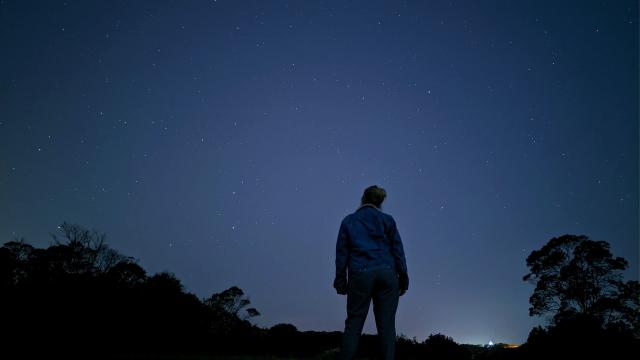One of the biggest upgrades to the Pixel 4 has been the camera, and it’s about time.
In addition to bumping up those megapixels (and denying us a wide angle lens) Google decided to flex hard by adding a dedicated astrophotography mode into the mix.
I’ll take any opportunity to escape Sydney’s neon claws, so a few of us tech writers headed out to a legit astronomy enthusiast spot to give it a whirl.
[referenced url=”https://gizmodo.com.au/2019/10/google-pixel-4-smartphone-review/” thumb=”https://gizmodo.com.au/wp-content/uploads/2019/10/Screen-Shot-2019-10-22-at-9.08.49-am-410×231.png” title=”The Pixel 4 Wins By Being More Human” excerpt=”Some phones look to impress with an abundance of tech, while others promise simplicity and a tightly knit ecosystem. But when it comes to Pixel phones, Google leans on its expertise in software. Last year, it felt like things finally came together on the Pixel 3 thanks to features like Night Sight, Call Screen, Now Playing song identification and more. But for the new Pixel 4, Google has put a twist on its typical software-first approach by creating a smartphone that responds to you less like a computer and more like a human.”]
How does it work?
The first thing you’ll need to do is get as far away from city and town lights as possible. The more light, the less stars you’ll be able to capture. You’ll mostly be left with with a few bright spots against a splotchy backdrop.
To make life easy, shooting in the dark automatically results in the phone asking if you want to use Night Sight. If it detects that the camera is also being held perfectly still, astrophotography mode will trigger. You’ll need a tripod for this – holding it in the hand doesn’t not work. We tried.
Once you have the phone set up, tap the shutter button. The long-exposure is set to four minutes, which really isn’t very long unless you’re modelling in shots like the header image above.
While shooting, be sure not to disturb the tripod, introduce added life sources (such as from the glow of a camera screen) or walk in front of the lens.
Voila, within a few minutes you should hopefully be left with a stunning night sky shot.
How did they turn out?
Despite being at a star gazing site, we were barely an hour out of Sydney’s CBD. This meant that the shots definitely still suffered from some light pollution.
That being said, the results were still gorgeous. For reference, all of the photos in this article were taken between 9 and 10pm and haven’t been edited.
Image: Tegan Jones/Gizmodo Australia
Image: Alex Choros/Whistleout
Image: Alex Choros/Whistleout
The stars were bright and not overly smudgey. Some are even quite crisp.
Adding a subject like myself or a treeline made for a stunning and dramatic effect that didn’t detract from the stars themselves.
Image: Alex Choros/Whistleout
Image: Tegan Jones/Gizmodo Australia
Image: Fergus Halliday/PC World
Image: Fergus Halliday/PC World
Did you get any comparisons?
Much like Google, Apple made a big deal about revamping the camera on the iPhone 11 Pro Max.
It’s the first iPhone camera I’ve been excited about in a long time and has quite a powerful night mode. It was the best choice for shooting alongside the Pixel 4 at the moment.
Of course, it was at an automatic disadvantage due to the lack of astrophotography mode. You can also only get the exposure to run for 30 seconds on a tripod, as opposed to the Pixel’s 4 minutes.
Image: Tegan Jones/Gizmodo Australia
Image: Tegan Jones/Gizmodo Australia
While you can still see the stars, the results are far more muddy and pixelated, which isn’t surprising.
The Verdict
While we didn’t get to test this feature under ideal conditions, I’m still impressed with the results. It definitely isn’t just a gimmick.
The shots are stunning and it’s incredible that phones can even do this in 2019, even with a bit of help from AI. It’s magical.
While there is room for improvement, astrophotography mode on the Pixel 4 strongly demonstrates just how far phone photography has come, and how quickly it’s improving year on year.
I personally can’t wait to take it out into the middle of nowhere, away from glimmering lights, in order to try and capture the Milky Way, which Google claims it can do.
If you plan on buying a Pixel 4, I highly recommend you try this.
Special thanks to Fergus Halliday from PC World and Alex Choros from Whistleout for going on this adventure with me, and sharing their shots.
